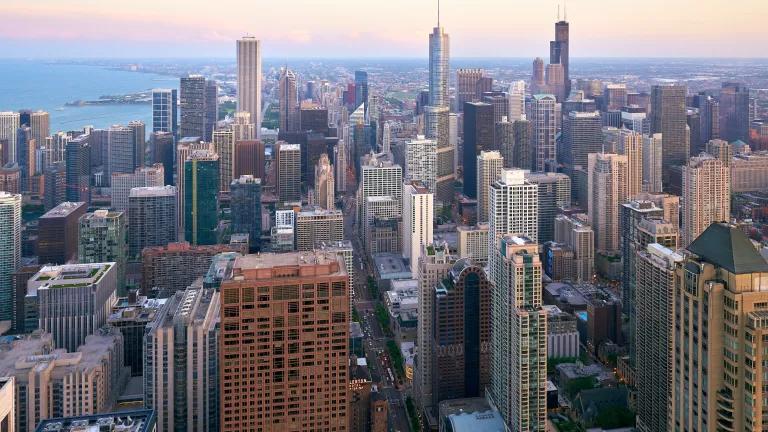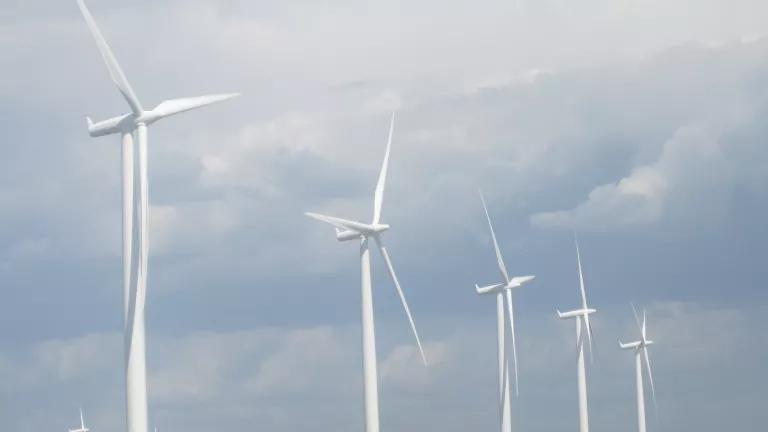In another important step towards reining in harmful air pollution from the oil and gas industry, last week EPA finalized guidelines triggering Clean Air Act requirements for states to address the sector’s contribution to ozone smog in areas of the country struggling with this pollution. Many areas are making progress against smog—which causes respiratory and cardiac problems—by controlling vehicles and other industrial sources. However, smog levels are rising in places like Colorado’s Front Range, along with booming oil and gas development. EPA’s latest step makes clear that states need to take action to control smog-forming pollution from the oil and gas sector. Doing so will improve regional air quality, and also begin to address climate-warming methane from oil and gas infrastructure in smog-burdened areas of the country.
Smog, also known as ground-level ozone, is formed by volatile organic compounds (VOCs) and nitrogen oxides (NOx) interacting in the atmosphere. A recent report by the Clean Air Task Force, “Gasping for Breath,” analyzes the public health toll from the ozone smog linked to oil and gas development: approximately 750,000 asthma attacks, 500,000 missed days of school, and 2,000 asthma-related emergency rooms visits. These impacts are not limited to communities immediately surrounding oil and gas fields, but are also seen in places like Chicago and New York due to the regional nature of ozone pollution.
EPA issued new “control techniques guidelines,” or CTGs, aimed at reducing VOCs from oil and gas production equipment and activities. While the agency set standards in 2012 and 2016 for new and modified equipment and activities, the new VOC guidelines address decades’ worth of older equipment. That’s important, because these so-called “existing” sources account for most of the current air pollution from oil and gas activities. And since VOCs are emitted along with methane from a range of sources, controlling VOCs from older equipment means we’ll begin to address the backlog of methane pollution as well.
Under the Clean Air Act, now that EPA has issued the CTGs, states that either have the worst ozone problems or are contributing to ozone problems in other states are responsible for determining which of the available, low-cost measures detailed in the guidelines (or other equivalent alternatives) constitute “reasonably available control technology.” Then they must adopt these measures as state regulations, to protect their own and their neighboring states' residents from smog pollution. Not surprisingly for those of us who follow this issue, the guidelines confirm that measures effective at controlling the pollution from new sources also can be used to clean up at older equipment at very similar costs.
One type of pollution source that EPA does not cover in the guidelines, but instead calls upon states to address based on site-specific data, is a class of wells termed “low-producing” (according to EPA, those that on average produce less than 15 barrel equivalents per day). It is critical that states take up the task of addressing these wells, as low-producing wells are not necessarily low-emitting—in fact, their emissions are disproportionately high relative to production—and such wells constitute upwards of two-thirds of existing oil and gas wells nationwide.
The CTGs are a step forward, but they apply only to a small part of the oil and gas infrastructure—the older equipment located in areas that don’t meet the ozone smog health standard or that are contributing to other ozone problem areas. The vast majority of the existing oil and gas infrastructure is located elsewhere, and it continues to leak vast amounts of climate-warming methane, as well as other pollutants that threaten the health of nearby communities. To meet our climate commitments and protect public health, EPA must move quickly to address these existing sources of methane and toxic pollution up and down the oil-and-gas chain in all areas of the country.
EPA has promised to address methane by the summer of 2017, and plans to take on air toxics after that. The agency is currently collecting a wealth of data to get the job done. We intend to work with the new administration to make comprehensive air pollution standards, including methane and air toxics, a reality as quickly as possible.



